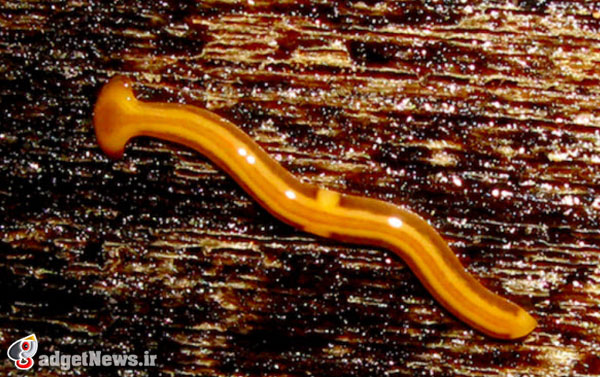
خیلی وقتها ما به جاندارانی در رده پایین تکاملی که میتوانند به آسانی اعضای از دسترفتهشان را برویانند، با حسرت نگاه میکنیم. پزشکان و دانشمندان بعضی اوقات آنها را بررسی میکنند، به این امید که راهی برای بازسازی اعضای قطع شده بدن انسان پیدا کنند، آرزویی که تا حالا عملی نشده است.
اما به تازگی دانشمندان دانشگاه Tufts تحقیق جالبی کردهاند، آنها کرم زرد کوچکی به نام پلانارین planarian را برای تحقیق انتخاب کردند، این کرم به خاطر تواناییاش در بازسازی مشهور است. چیز جالب این است که حتی اگر سر این کرم هم جدا شود، سر دوباره رشد میکند.
اما چیز جالبتر خاطرات این کرمها بود. پژوهشگران قبل از جدا کردن سر کرمها، آنها را در شرایطی قرار دادند که مجبور باشند به فضای باز و زیر نور بروند تا به غذا برسند. در شرایط معمول این کرمها دوست ندارند به فضای باز بیرون بروند و زیر نور قرار بگیرند، اما دانشمندان با قرار دادن غذا در این فضاها به نوعی آنها را آموزش دادند.

در مرحله بعد دانشمندان سر تعدای از کرمهای آموزشدیده و آموزشندیده را جدا کردند، جالب بود که آن دسته از کرمهایی که قبل از جدا شدن سر آموزش دیده بودند، سریعتر از دسته دیگر کرمها، یاد میگرفتند که برای دسترسی به غذا باید چه کنند و این کار تنها با یک جلسه تمرین انجام میدادند.
حالا این سؤال مطرح است که چطور کرمها خاطرات سر جداشدهان را به یاد میآورند؟
دانشمندان مسئله را به ۲ شیوه توجیه میکنند:
۱- بعضی از خاطرات ممکن است به صورت همزمان در جای دیگری از بدن هم ضبط شوند.
۲- قبل از جداسازی سر، مغز اصلی، تغییراتی در سیستم عصبی میدهد، بعد از جداسازی، سیستم عصبی، در حین رشد مغز، تغییراتی در نوع رشد مغز اعمال میکند.
این تحقیق در نشریه Experimental Biology به چاپ رسیده بود.
مغز انسان بسیار پیچیده است و نباید به تکرار چنین سناریویای در انسان فکر کرد. اما از نتایج تحقیقاتی مثل این میشود در شناخت حافظه و کارکرد فرایند یادگیری، اعتیاد و ترک اعتیاد استفاده کرد.از سوی دیگر همین تحقیق میتواند دستمایه نوشتن داستانها و فیلمهای تخیلی هم قرار بگیرد. شاید هم قبل داستانهایی با همین مضمون نوشته شده باشد!
منبع : www.en.gadgetnews.net
Worms regrow their decapitated heads, along with the memories inside
Some memories just won't die — and some can even be transferred to a whole new brain. Researchers at Tufts University have determined that a small, yellow worm known as a planarian, which has long been studied for its regenerative properties, is able to grow back a lot more than just its body parts: after the worm's small, snake-like head and neck are removed, its body will even regrow a brain that's capable of quickly relearning its lost skills.
"A little training makes it all come back"
The researchers tested the memory of planarians by measuring how long it took for them to reach food in a controlled setting. The small worms dislike open spaces and bright lights — but they had been trained to ignore it so that they could find their meals. Even after decapitation, worms that had gone through training were able to overcome their fears and start eating much faster than worms that hadn't been trained. However, the memories didn't come back immediately. Each worm still had to be reminded of its earlier knowledge, though it only took a single lesson for it to all come back.
Why this happens is still unclear. Planarians' brains control their behavior, but the researchers suggest that some of their memories might be stored elsewhere in their body. Alternatively, they suggest that the worms' original brain may have modified their nervous systems, and their nervous systems may have then altered how the new brains formed during regrowth.
The researchers' findings appears in The Journal of Experimental Biology. They say that more work needs to be done to nail down the specifics of how planarians recover their memory, but the hope is that the worms can be used as a way to study how memory and learning work. That may sound complicated for a seemingly basic creature, but existing studies are already using them to research drug addiction and withdrawal.
 گجت نیوز آخرین اخبار تکنولوژی، علم و خودرو
گجت نیوز آخرین اخبار تکنولوژی، علم و خودرو 





